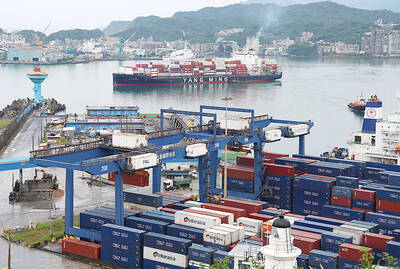Equifax on Monday said an investigation into the massive data breach at the credit agency discovered 2.5 million additional potential victims, bringing the total to 145.5 million.
Interim chief executive Paulino do Rego Barros, made the disclosure in a statement, saying: “Our priorities are transparency and improving support for consumers. I will continue to monitor our progress on a daily basis.”
The statement said the cybersecurity firm Mandiant made the new estimate after a forensic review of the incident, which is believed to be one of the worst breaches because of the sensitivity of data leaked.
The review “also has concluded that there is no evidence the attackers accessed databases located outside of the United States,” the Equifax statement said.
Mandiant found that about 8,000 Canadian consumers were affected by the hack, fewer than the initial estimate of 100,000. The company said a review of the impact on British consumers was still being analyzed.
Separately on Monday, former Equifax chief executive officer Richard Smith said in testimony prepared for a congressional hearing that the security team at Equifax failed to patch a vulnerability in March after getting a warning about the flaw.
Smith offered a timeline of the cyberattack which leaked US Social Security numbers and other sensitive data.
Smith said in prepared remarks to a House of Representatives panel that the company on March 9 circulated an internal memo warning about a software flaw identified by the US government’s Computer Emergency Response Team.
He added that Equifax policy would have required a patch to be applied within 48 hours and that this was not done — but he could not explain why.
Equifax’s information security department ran scans that should have identified any systems that were vulnerable, but failed to identify any flaws in the software known as Apache Struts.
“I understand that Equifax’s investigation into these issues is ongoing,” he said in the statement. “The company knows, however, that it was this unpatched vulnerability that allowed hackers to access personal identifying information.”
Smith said he was notified of the breach on July 31, but was not aware “of the scope of this attack.”
He informed the company’s lead director three weeks later, on Aug. 22, and board meetings were held on the matter Aug. 24 and Aug. 25.
Equifax, one of the major agencies gathering data used in credit ratings for banks, has come under fire for waiting until Sept. 7 to publicly disclose the breach, and investigators are looking into stock sales by two senior executives in August.
Smith stepped down last week amid the investigation, while indicating he would remain in a consulting capacity during the investigation, which includes a congressional hearing scheduled for yesterday.
Smith offered a fresh apology for the attack, saying in his statement: “As CEO I was ultimately responsible for what happened on my watch. Equifax was entrusted with Americans’ private data and we let them down.”

The demise of the coal industry left the US’ Appalachian region in tatters, with lost jobs, spoiled water and countless kilometers of abandoned underground mines. Now entrepreneurs are eyeing the rural region with ambitious visions to rebuild its economy by converting old mines into solar power systems and data centers that could help fuel the increasing power demands of the artificial intelligence (AI) boom. One such project is underway by a non-profit team calling itself Energy DELTA (Discovery, Education, Learning and Technology Accelerator) Lab, which is looking to develop energy sources on about 26,305 hectares of old coal land in

Taiwan’s exports soared 56 percent year-on-year to an all-time high of US$64.05 billion last month, propelled by surging global demand for artificial intelligence (AI), high-performance computing and cloud service infrastructure, the Ministry of Finance said yesterday. Department of Statistics Director-General Beatrice Tsai (蔡美娜) called the figure an unexpected upside surprise, citing a wave of technology orders from overseas customers alongside the usual year-end shopping season for technology products. Growth is likely to remain strong this month, she said, projecting a 40 percent to 45 percent expansion on an annual basis. The outperformance could prompt the Directorate-General of Budget, Accounting and

Netflix on Friday faced fierce criticism over its blockbuster deal to acquire Warner Bros Discovery. The streaming giant is already viewed as a pariah in some Hollywood circles, largely due to its reluctance to release content in theaters and its disruption of traditional industry practices. As Netflix emerged as the likely winning bidder for Warner Bros — the studio behind Casablanca, the Harry Potter movies and Friends — Hollywood’s elite launched an aggressive campaign against the acquisition. Titanic director James Cameron called the buyout a “disaster,” while a group of prominent producers are lobbying US Congress to oppose the deal,

Two Chinese chipmakers are attracting strong retail investor demand, buoyed by industry peer Moore Threads Technology Co’s (摩爾線程) stellar debut. The retail portion of MetaX Integrated Circuits (Shanghai) Co’s (上海沐曦) upcoming initial public offering (IPO) was 2,986 times oversubscribed on Friday, according to a filing. Meanwhile, Beijing Onmicro Electronics Co (北京昂瑞微), which makes radio frequency chips, was 2,899 times oversubscribed on Friday, its filing showed. The bids coincided with Moore Threads’ trading debut, which surged 425 percent on Friday after raising 8 billion yuan (US$1.13 billion) on bets that the company could emerge as a viable local competitor to Nvidia